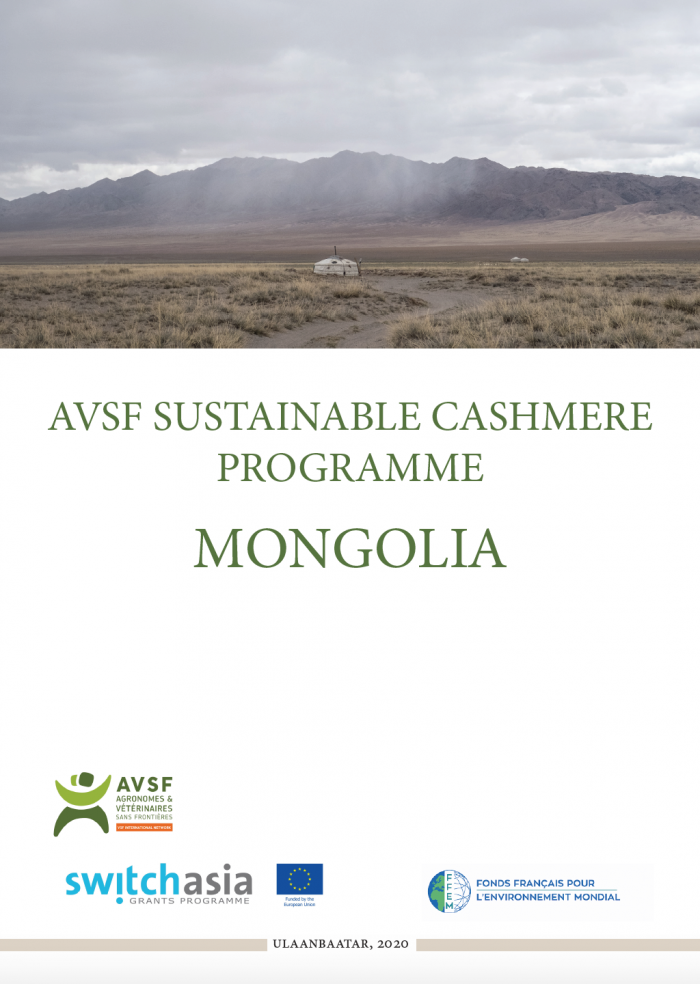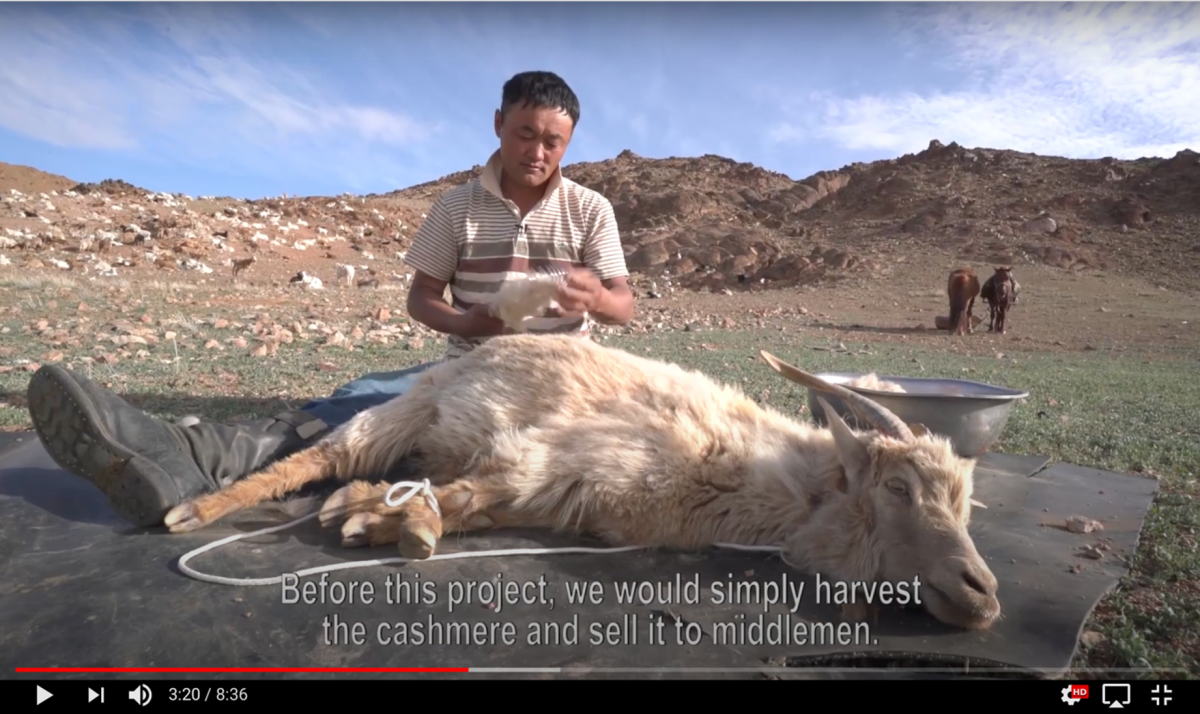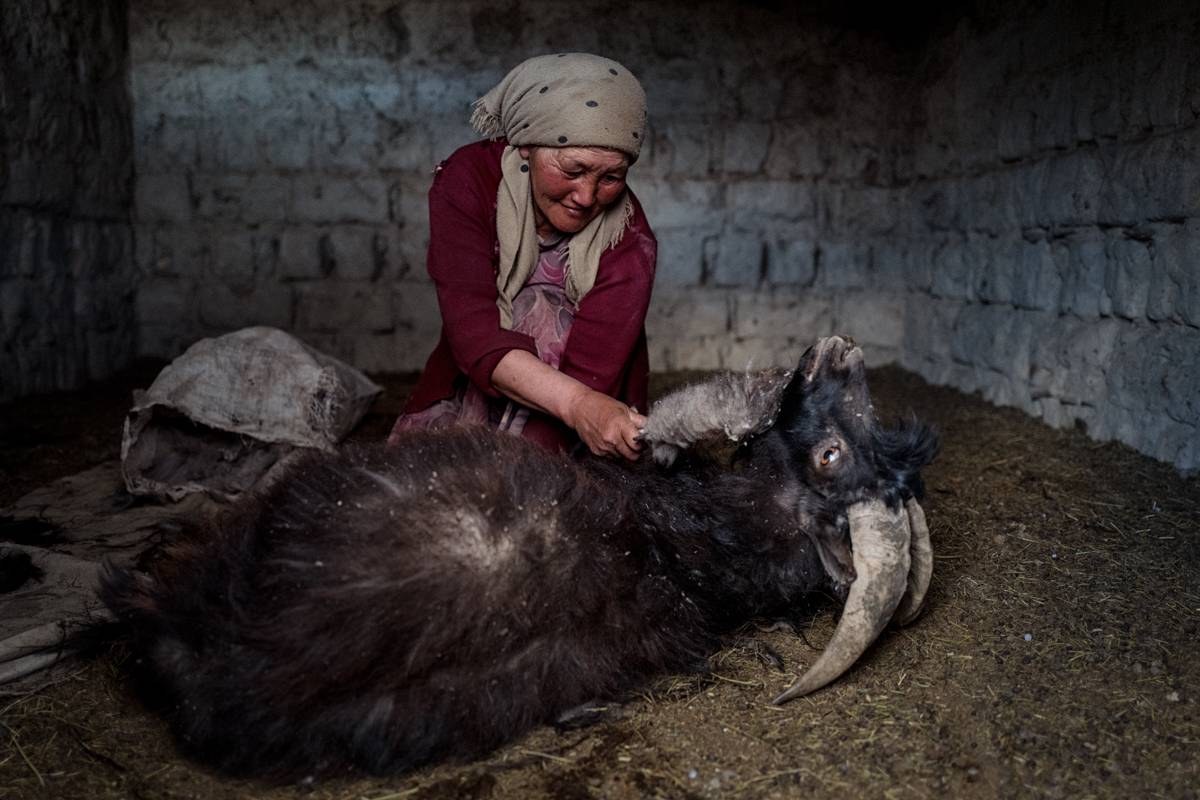
With a population of 3.17 million people and more than 80 million livestock animals, Mongolia is the world’s second largest producer of cashmere wool.
This ancient fiber has long been associated to luxury, with earliest documented usage dating back to the 18th century, when Cashmere shawls were being exported to the western world, particularly France and Britain. Legend also says that in the 13th century, during his travels along the Silk Road, Marco Polo discovered in several caves in Mongolia representations of wild goats domesticated by man. It is very likely that even in earlier centuries, cashmere goats were raised by herders not only for their meat but also for their warm wool.
Today, the global demand for cashmere has been growing steadily across all sectors of the market, especially in Europe, where Italy and the UK are the main importers from China and Mongolia. The cashmere sector is contributing to 5% of the Mongolian GDP and about 100 textile industries (95 Micro, Small and Medium Enterprises) are providing more than 20,000 jobs to people, mostly in the capital city.
The increase in consumers’ spending on luxury goods has however brought significant negative social, environmental and economic impact on both the environment, herders, producers, and buyers.
Still in transition towards a free market, Mongolian herders face difficulties to adjust their productive systems to create value, preserve their natural resources and altogether secure their livelihoods and resilience. Loss of traditional know-how on collective rangeland management, collapsing extension services, lack of market opportunities and dysfunctional value chains have contributed to an under-performing livestock sector.
To cope with economic uncertainties, herders have adopted a quantitative strategy, increasing their herds size as a safety net for food and livelihoods. As of 2020, herd size is estimated at 80+ million while carrying capacity is estimated at about 45 million. These factors have set off a destructive cycle which is intensifying.
Oversized herds are damaging rangeland and water sources as they compete for dwindling quantities of falling quality forage. In turn, quality of livestock product is decreasing, resulting in lower incomes for herders who are compensating by increasing their herds. Due to overgrazing, around 65% of country’s rangeland is degraded (out of which 25% severely degraded) and the soils fertility is depleting at an alarming rate.
While the demand for sustainably produced and traceable products on the global textile market is increasing, there is still a strong need for clear standards to help guide herders, producers, traders, buyers or brands on the the social, environmental or economic impacts of cashmere production. In 2019, a UNDP Market Assessment on Sustainable Cashmere reported that the sector still lacks a harmonized vision of what sustainable cashmere production should be and how to achieve it.
The European Union is committed to tackle these challenges together with Agronomes et Vétérinaires Sans Frontieres (AVSF) and Mongolian key partners. The EU SWITCH-Asia Sustainable Textile production and Eco Labeling (STeP EcoLab) project responds to the challenges and difficulties faced by Mongolian herders and strengthens the capacities of the country’s processing industries to meet international buyers’ expectations (both in terms of quality management and sustainability).
"Rangeland are the bedrock of Mongolian traditional herding systems but are severely threatened by overgrazing and climate change, putting pastoral communities at risk of losing their livelihoods. Relying on herders’ organisations, robust certification scheme and fair trade principles, STeP EcoLab supports broad dissemination of collective and sustainable practices among herders, which are in turn awarded with extra environmental premium," explains Guillaume Touati, Country Representative, AVSF Mongolia and Project Manager.
An integrated approach encompassing all steps of sustainable cashmere value chain development is being promoted through this project, from production to consumption, as the only way to bring about a long-lasting change, as also explained by Mr. Traian Laurentiu Hristea, Ambassador of the European Union to Mongolia.
The importance of the Step Ecolab project is that it embraces the whole wool and cashmere sector development, from the herders to end users. Sustainable production is important as it aims at addressing pastureland issues, ever increasing number of livestock and most importantly herders’ well-being. A Voluntary code of practices, which is a simplified version of sustainability standards in the production elaborated and introduced to the industries by the STeP EcoLab, will help the industries to stand still and find the right start towards sustainable production practices. The consumers survey conducted by the project also confirmed that the consumers are interested in sustainability and ready to pay premium price for sustainable products. However, there are many challenges that the project team together with its partners and with the support from other donors and international organizations need to address in order to pioneer a Sustainability model in wool and cashmere production.
Herders and MSMEs are being encouraged to adopt sustainable practices that will be made visible on Mongolian and European markets through the new Sustainable Cashmere certification elaborated by AVSF. This certification is by-design suited to the semi-nomadic pastoralism context and cashmere production, and is providing great benefits as Ms. Urnaa, Board Member of the “Uguuj Bayan Ulziit Gol” cooperative in Bayankhongor explains.
The Goat Herder’s Voice
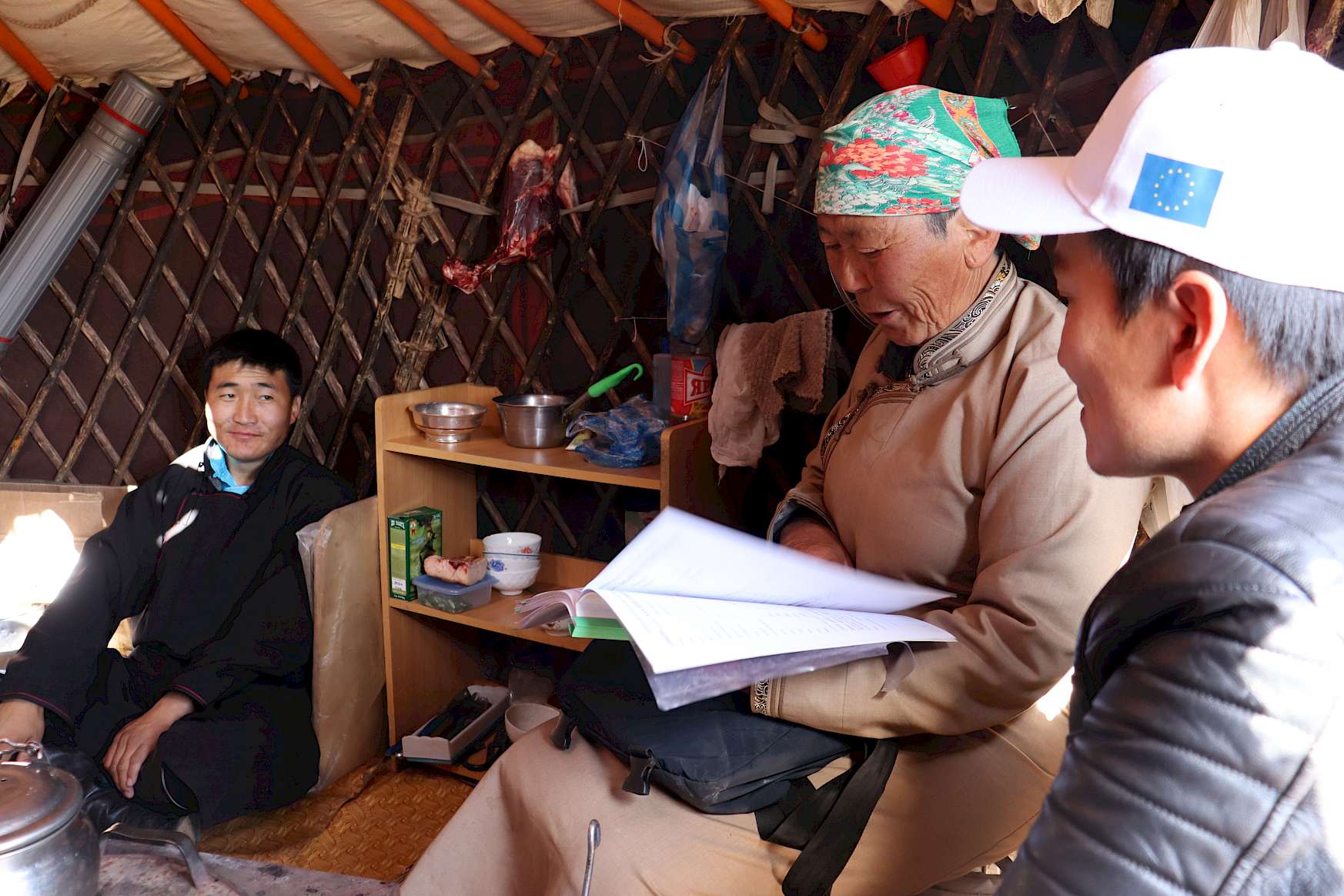
Urnaa’s cooperative includes over 60 households and for more than three years, with the support of the Sustainable Cashmere Union (SCU) and AVSF, it has been supplying sustainable and certified cashmere to local and international markets, improving livelihoods of the community and contributing to reducing pastureland degradation.
Together with her husband, Urnaa owns around 400 livestock and for over 30 years she has been carrying forward their herding tradition. Of their seven children, six are currently living comfortable lives with their own families in the settlement areas. “Enormous sacrifices have been made to ensure our children could get a good education and a better life. This would have not been possible without our livestock, our most precious family asset”.
Urnaa continues to explain that raising animals and producing good quality cashmere requires a great amount of work. Goats need good fodder and care, especially during Mongolia’s strong winters. With the increase in pastureland degradation, water scarcity, frequent natural disasters, and unregulated markets, herders’ lives are becoming too tough and uncertain.
Although the government and the members of the cooperative are joining forces to restore rangeland quality and productivity and supply sufficient amount of fodder as part of winter preparedness, the exhausted animals struggle to live through the freezing winters. AVSF continuous technical assistance and innovative approach increases resilience of pastoral communities to climate disasters and adaptation to climate change. Industries’ constant relation with the cooperatives is critical to ensure their stability and that the sourcing of quality and sustainable cashmere is not interrupted. SCU role in that respect is crucial, acting as a necessary intermediary to liaise them.
Being part of this project was a turning point for Urnaa’s family, as well as for neighboring herders.
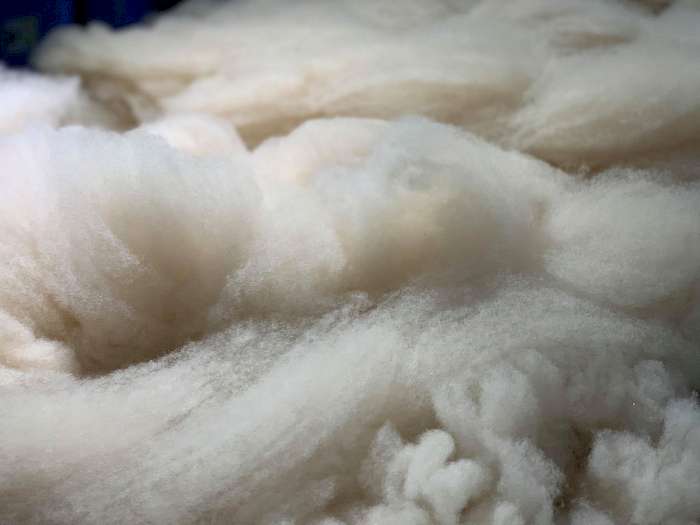
"As a cooperative, we have committed to switch to sustainable cashmere, while reducing the number of animals and in the long-run contributing to better pastureland conditions. We care about the wellbeing of our animals and the quality of their wool, and are proud to be part of the sustainable cashmere value chain. Through the capacity building training programmes conducted under the SWITCH-Asia STeP Ecolab Project, we greatly improved the quality of our breed and cashmere."
Urnaa continues to explain that thanks to the Sustainable Cashmere Certificate that her cooperative has obtained with the support of this project, their cashmere is now being purchased at a premium price by international buyers and local processors, who in return, have signed and are committed to a Voluntary Code of Practice to implement sustainable processing.
“It is always a good feeling to know that someone in Europe is wearing a sweater knitted with the cashmere from our Mongolian goats. I can imagine how soft this must be."
Urnaa’s story is one among many stories coming from the pasturelands that is worth being shared worldwide. A testimony of the strong efforts taken by herders in Mongolia to ensure sustainability of livestock, even when faced with enormous environmental and economic challenges.
Herders cooperatives and MSMEs in Mongolia are already taking their stance for a transition of Mongolian livestock and textile sector towards a green economy.
Will European brands, industry actors, luxury groups also support the environmental, social and economic long-term sustainability of production systems?
Will cashmere consumers take more responsible choices towards sustainability?
Related Videos
A Cashmere’s Future (AVSF and French Facility for Global Environment)
Mongolia's cashmere producers seek a sustainable future (Al Jazeera)
A Cashmere’s Story (AVSF and Humus – Fonds Pour La Biodiversité)
Best Practices on Cashmere Production (AVSF STeP EcoLab in Mongolian)
Yack fibers to preserve the environment in Mongolia (Al Jazeera)
More on Sustainable Cashmere
Download here
